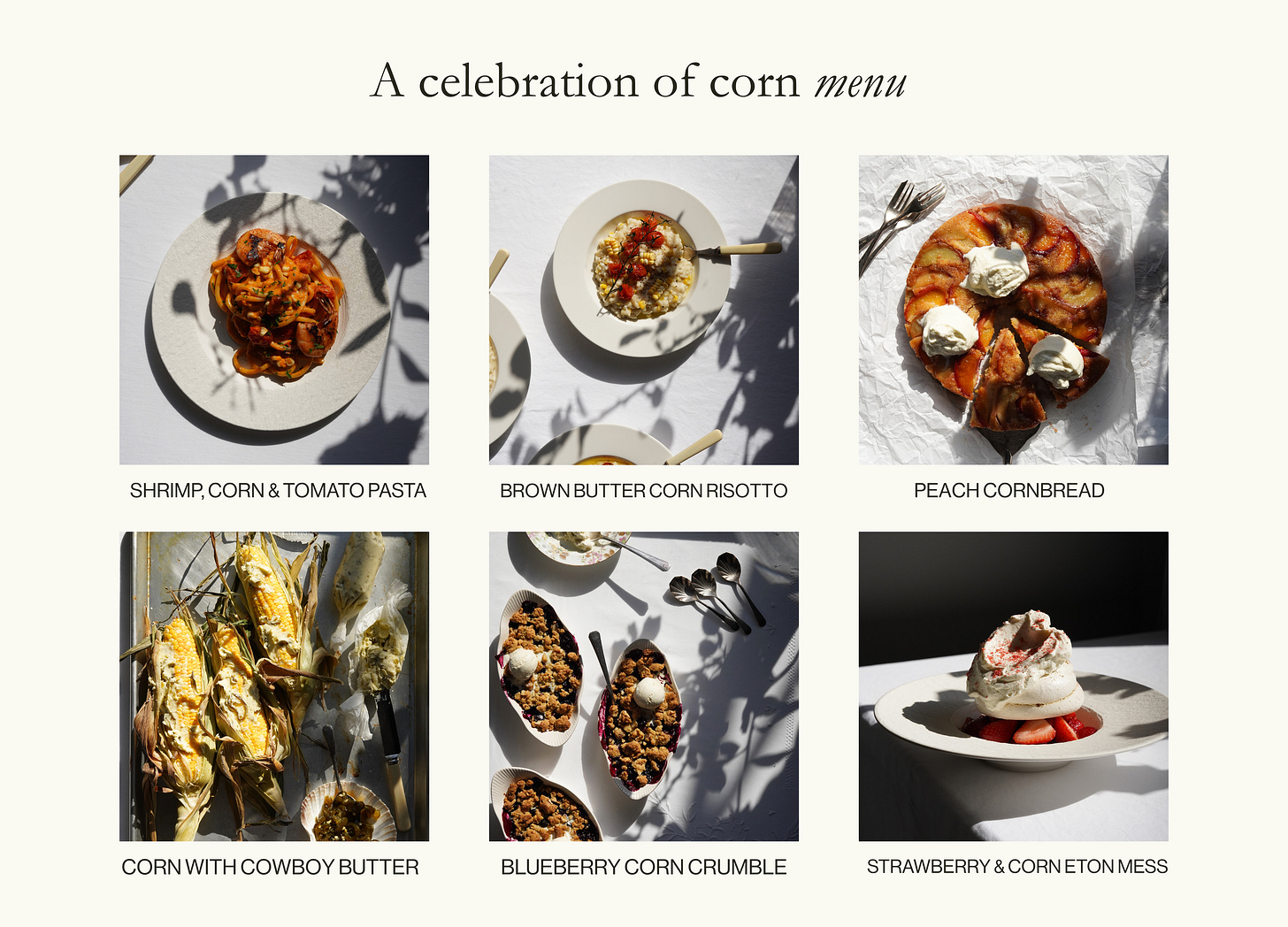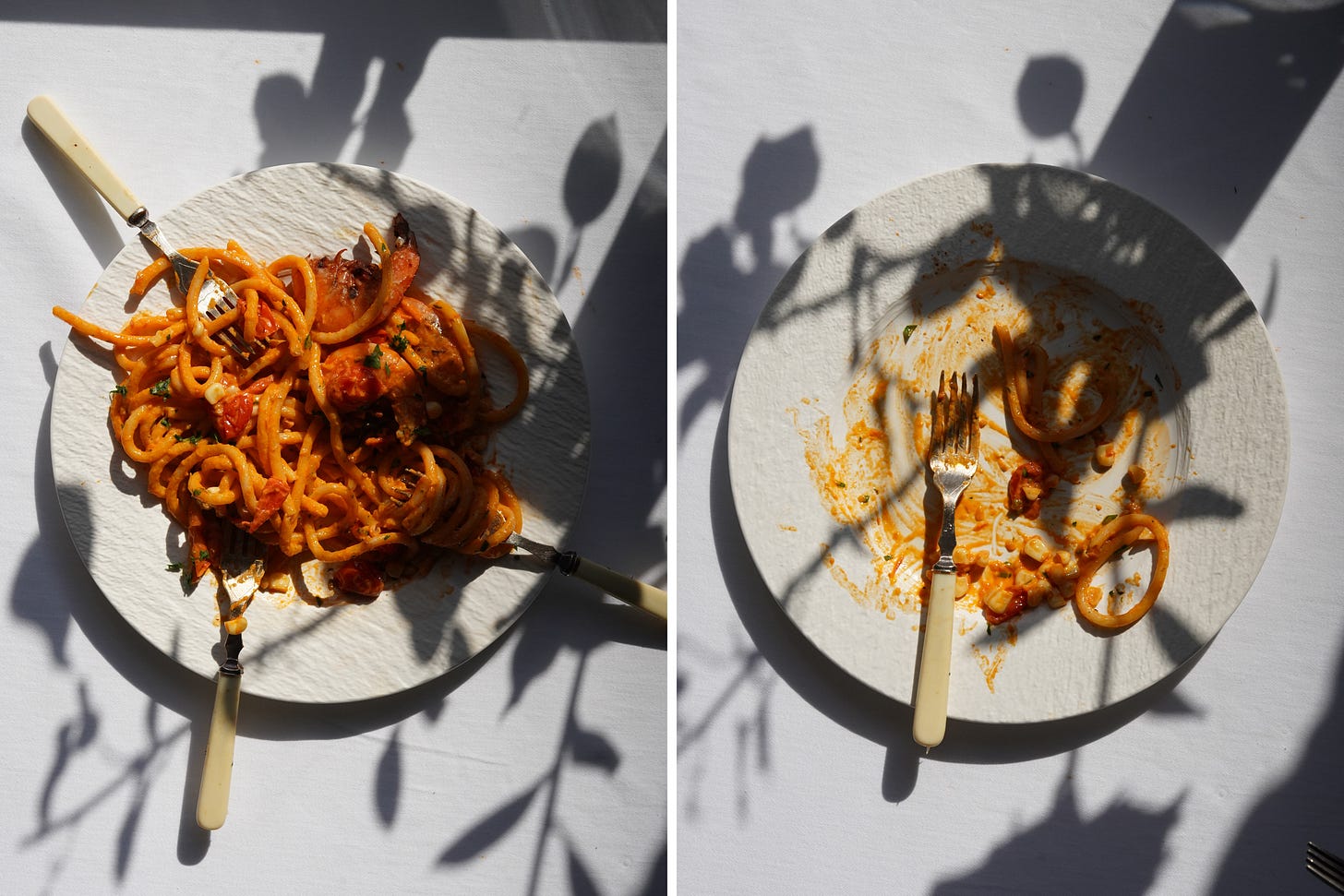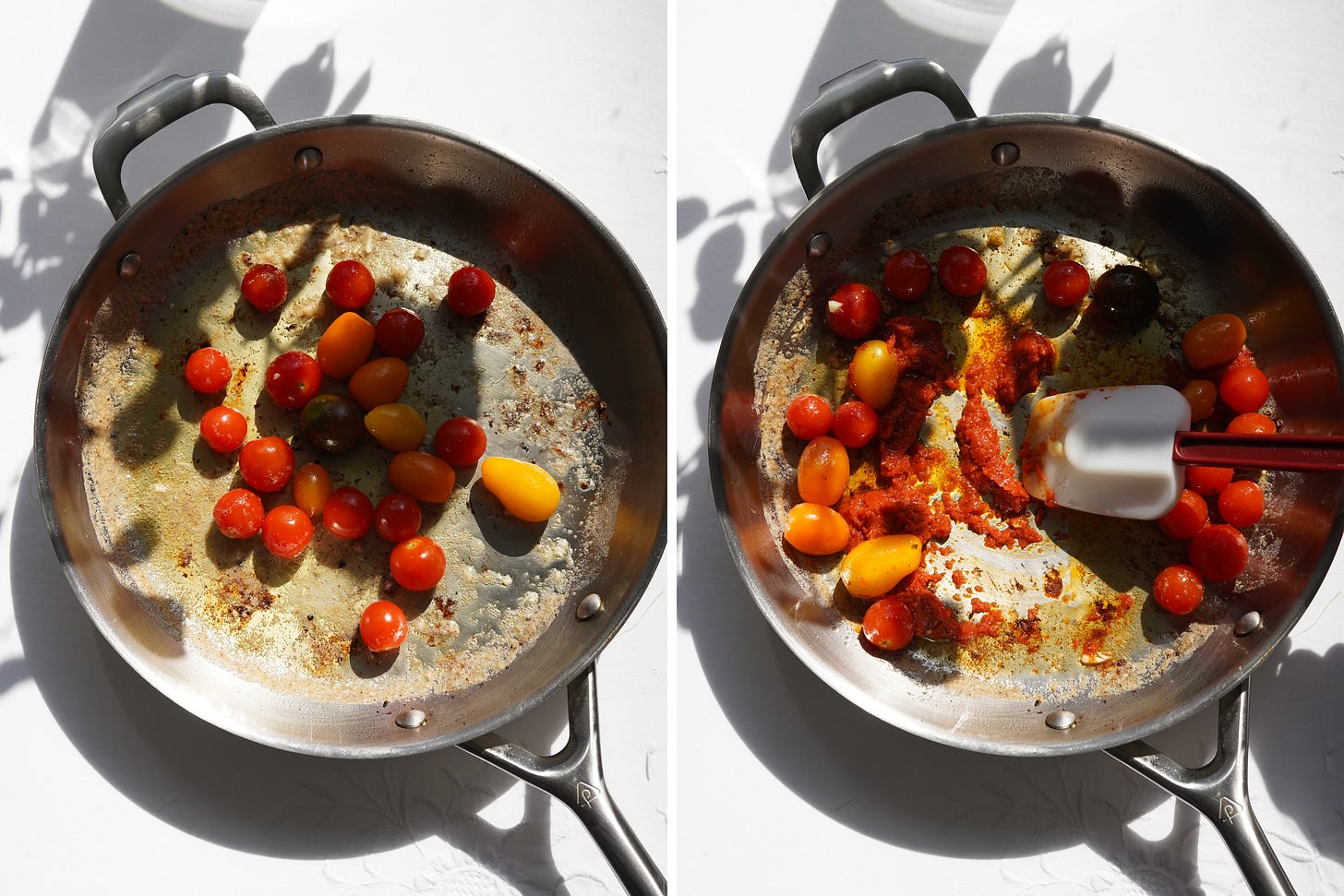Hello, folks. We're kicking off our recipe series celebrating corn with a delicious supper dish: Shrimp, Corn, and Tomato Vodka Pasta. There’s homemade tomato paste involved, and before you inch away, let me assure you - it’s not nearly as laborious as you might think. Not the way I make it. All it takes is ripe summer tomatoes, good olive oil, salt, and a little time. What you get in return is intensity. Nothing like the sharp, metallic smear from a tube, but something deeper, darker, salt-laced and gently acidic. This tomato paste is so rich you’ll consider eating it straight from the jar.
The shrimp are rubbed in a mixture that plays with contrast: the slow burn of chili, the smoky drag of paprika, and just enough brown sugar to tilt the balance. Sear these beauties fast and loud - they’re all the better if you can achieve a nice char - then fold them through the pasta along with sweet in-season corn and burst cherry tomatoes. Before you know it, these ingredients will soften into a lush sunlit dish that will delight friends and family.
This newsletter marks the beginning of a series—my unabashed ode to corn in all its guises. Over the next few days, I will be demonstrating how to use every part of this amazingly versatile vegetable : the kernels, of course, but also the starchy milk scraped from the cob, the husks, even the cob itself, simmered in stock. Nothing wasted, everything honored.
I’ve been dreaming about this moment since February when the markets were full of nothing but roots, brassicas and citrus. But now it’s June, and here in California the corn season has officially started and the bins are overflowing with golden ears and tangled husks.
A few days ago, I asked our subscriber chat group which seasonal ingredient - following the focus on rhubarb - we should turn our attention to next. The vote was clear: corn.
I realize that for readers in the UK and across Europe the corn crop has yet to ripen, but I promise that everything I’m about to share will work just as well without fresh kernels.
You also voted to receive the recipes at a slow pace, one letter at a time rather than in one overwhelming glut - bang went my imagined newsletter title: The Cornucopia. So, over the next week or so, expect a gentle trickle of letters followed by a bumper compilation issue filled with flavor pairings, extra recipes, and some “non-recipe” ideas too.
Right now, I’m deep in the weeds of corn research—well, imaginatively, at least. I’ve been reading The Third Plate: Field Notes on the Future of Food by Dan Barber, who writes about soil and seeds the way poets write about love: reverently, intimately, with a sense of awe that’s contagious. He’s an exceptional storyteller who provides a knowledgeable, well-argued rationale for the need to vary and rotate crops if the farm-to-table philosophy is to be sustainable. If you haven’t read this book you must find, or else order a copy at your local bookshop.
His writing not only has me thinking differently, but also cooking differently. For the first time, I’m working with freshly milled, heirloom cornmeal—and it’s absurdly good. It tastes like corn, yes, but also like toast and wildflowers and something ancient and fragrant that you can’t quite put your finger on.
Small batch, local cornmeal certainly costs more—ten or thirteen dollars more than the usual sack of yellow dust you find at the grocery store—but this is special! It’s the type of ingredient that slows you down in the kitchen, but for that very reason, it also sharpens your focus. We’ll get into all of that soon, but for now let’s talk pasta.
There are a handful of kitchen rituals that repay their effort a hundredfold, homemade tomato paste is one of them. Forget the fussy palaver of blanch‑peel‑sieve, just halve ripe tomatoes, scatter them on an oven tray, and slow‑roast until shrivelled and sweet. Blitz the lot—skins, seeds, caramelized juices—then return the purée to the oven for a final, leisurely reduction.
The skins stay put, bringing a bright, almost pomegranate‑sharp acidity that bottled purée can only dream of. This tomato paste keeps happily in the fridge for three or four days, or in the freezer for months, so why not make a double batch - perfect for when you’re short on time as well as inspiration.
This pasta is really a short course in layering flavor. First, fresh sweet cherry tomatoes are cooked in butter until their skins burst, then a few tablespoons of your tomato paste: deep, sticky, and sweet. A swift blaze of vodka follows, not only lifting the sauce’s spirits but also coaxing forth a silky richness with the addition of a swirl of cream. If you’ve mixed the shrimp rub in advance and your tomato paste is waiting in the fridge, supper is fifteen unhurried minutes away.
Served with the pasta twirled high complete with prawns lounging atop, this dish will taste as though you’ve been at the stove all afternoon—only you will know the secret of its speed.
Think of this recipe as a launchpad — a starting point for your own flavor adventures. Swap, twist, improvise — let your pantry and palate lead the way.
Keep reading with a 7-day free trial
Subscribe to A Good Table to keep reading this post and get 7 days of free access to the full post archives.
















